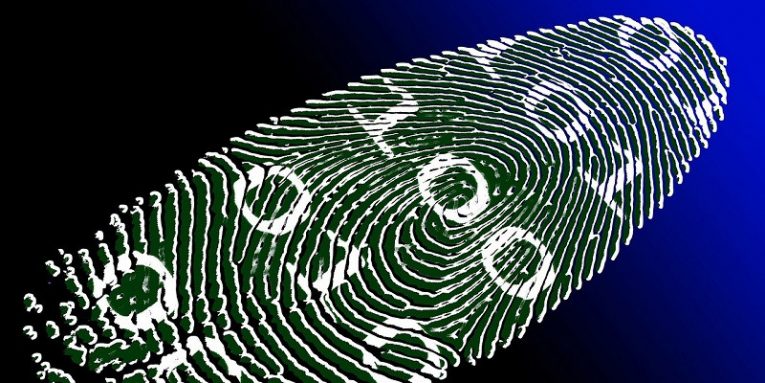Almost 1 in 5 Americans Claim That Their Identities Had Been Stolen

The increasing number of data breaches and phishing attacks are most likely to blame for the growth of virtual identity theft cases. It is a serious problem since in some cases it can cause long-lasting consequences. For example, if someone commits fraud or other crimes while pretending to be you, it could take time to correct public records. Moreover, according to CNBC, identity theft is no longer an adult problem, as children can have their identities stolen just the same. At this point, you may wonder if there is anything you can do to protect yourself and your children from getting your identities stolen. In such a case, we recommend reading our blog post carefully as further we answer the question of how to prevent virtual identity theft. Also, we discuss virtual identity theft in more detail.
The recent survey ZDNet acquired from a cybersecurity company called nCipher revealed that about 18 percent of questioned Americans admitted that their identities had been stolen. The situation may not look so scary, but you should also know that almost 17 percent of the respondents said they cannot tell if they have ever had their virtual identity thieved. In other words, the number of people who have experienced identity theft might be much more significant, it is just that some of them may have no idea about it.
As mentioned earlier, the increasing number of data breaches might be associated with the growth of identity theft. Cybercriminals can obtain vast amounts of login credentials and other sensitive information during such incidents. It all depends on how many records the targeted company holds and how well they are protected. If stolen data is encrypted with a robust cryptosystem, hackers cannot access it. Unfortunately, according to Breachlevelindex.com, only 4 percent of data breaches that occurred since 2013 were the so-called “Secure Breaches” when the stolen data was encrypted and considered useless. Therefore, victims of data breaches can quickly become victims of virtual identity theft.
Another way to obtain information needed for identity theft is phishing. During such attacks, cybercriminals try to trick their victims into revealing their sensitive information to them. There are lots of different ways to reach targeted victims, for example, hackers could lure them into fictitious websites or send them fake emails. The content of such sites and emails depends on what information the scammers wish to obtain. For example, if they need login credentials for the victim’s banking accounts, cybercriminals could send a message saying someone is trying to log into your banking account. Such an email could ask you to change your password and lead you to a fake password reset page of the mentioned bank to steal your current passcode.
After obtaining your sensitive information, cybercriminals can use it to steal your money, take over your accounts, take credit in your name, and so on. Sadly, hackers can have various possibilities to misuse your data, so assuming no one could be interested in thieving your identity is a huge mistake. Information is probably one of the most valuable things nowadays, so you ought to realize that, given a chance, any hacker would steal your identity. They can figure out how to use it later on too. Thus the big question is how to prevent virtual identity theft. The truth is that while there are ways to make the task of stealing your sensitive information as challenging as possible, there is nothing you can do that would guarantee you will never become a victim of virtual identity theft. Still, it does not mean there is no point in trying to protect your privacy. We encourage you not to give up just yet and take a look at the tips available below.
3 tips on how to prevent virtual identity theft
1. Act quickly
While you might not be able to protect yourself from data breaches, you can prevent cybercriminals from misusing your information if you react fast. For instance, login credentials can be replaced to make the compromised username and password useless. How to learn about data breaches? Some organizations inform their users right away, while others try to hide the fact for as long as possible. Nonetheless, there are cybersecurity experts and organizations who keep us informed on such incidents, so make sure you check websites announcing cybersecurity news from time to time. Also, do not forget to check your email as companies you provide it to may use it to let you know about data breaches.
2. Learn how to recognize phishing
There are various types of phishing attacks and the worst way to find out about their existence is to experience them yourself. Thus, it is best not to wait till you come across a phishing website or phishing email and invest some time in learning how to avoid being scammed. Recently, Google came up with a quiz that shows examples of phishing emails and teaches the user to pay attention to the details that could help him identify them. If you recognize a phishing email, you should also report it. Doing this might help protect others that could be not as knowledgeable as you from getting scammed.
3. Make sure your accounts are protected
Cybercriminals can steal your virtual identity without obtaining your login credentials during a data breach. In fact, they may not even have to trick you into revealing such data yourself if you are using weak passwords. Dictionary passwords or combinations including the user’s name or date of birth are easy to guess. Therefore, if you want to protect your virtual identity, you should start from securing your accounts. To learn how to do so, we recommend reading here and installing the Cyclonis Password Manager that can help you create strong passwords and that can remember them for you.
All in all, virtual identity theft might cause a lot of problems, but it is not the end of the world, as there are ways to recover your identity. What is important is to learn from the experience and take extra precautions. We hope our tips on how to prevent virtual identity theft will help you get started, and if you want to know more about how to protect your privacy, you could read our previous blog post too.








